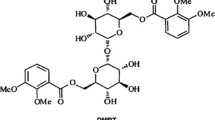Abstract
The retinal pigment epithelium (RPE) is a monolayer to function as a compact barrier between photoreceptor and choroid and also a regulator of the overlying photoreceptor layer by providing nutrients. If RPE is damaged, choroidal neovascularization is occurred, accompanied by inflammation, which leads to degeneration of whole retina layer and furthermore, loss of vision. Thus, the preservation of RPE layer is very critical treatment to block the progression and occurrence of diverse ocular disease, inducing age-related macular degeneration (AMD). In this study, we explored the new role of SP in RPE regeneration. After confirming the expression of NK-1R on ARPE-19 cells, we treated SP to ARPE-19 cells in vitro to evaluate the effect of SP on proliferation rate and migratory capacity. SP could promote proliferation and migration of ARPE-19 in dose-dependent manner in vitro. Based on the in vitro data, 5nmole/kg of SP was intravitreally treated to laser-induced RPE damaged mice in vivo, showing that PBS-injected mice had severed disturbed retina layer, whereas SP-injected mice maintained retina layer more intact without detachment of RPE. In addition to histological comparison, the efficacy of SP was assessed according to the score that indicate the severity of retina degeneration. This confirmed that SP can exert the beneficial effect on laser-induced RPE damage. Collectively, our findings suggest that SP can stimulate the regeneration of RPE layer and thus, it may be possible that SP is used as the new therapeutics for RPE-damaged disease including AMD.
Similar content being viewed by others
Reference
Klein, B. E., Klein, R, Cataracts and macular degeneration in older Americans, Arch. Ophthalmol, 100, 571–573 (1982).
National Advisory Eye Council. Vision Research: Anational Plan. Executive Summary, 1983–1987. Bethesda, MD (1984).
Harris JR, Brown GA, Jorgensen M, Kaushal S, Ellis EA, Grant MB, et al., Bone marrow-derived cells home to and regenerate retinal pigment epithelium after injury, Invest Ophthalmol Vis Sci, 47, 2108–2113 (2006).
Binder S, Stanzel BV, Krebs I, Glittenberg C, Transplantation of the RPE in AMD, Prog Retin Eye Res, 26, 516–554 (2007).
Toma HS, Barnett JM, Penn JS, Kim SJ, Improved assessment of laser-induced choroidal neovascularization, Microvasc Res, 80, 295–302 (2010).
Machemer, R. and Steinhorst, U, Retinal separation, retinotomy, and macular relocation. A surgical approach for age-related macular degeneration, Graefes Arch. Clin. Exp. Ophthalmol, 231, 635–641 (1993).
Avitabile T, Longo A, Reibaldi A., Intravitreal triamcinolone compared with macular laser grid photocoagulation for the treatment of cystoid macular edema, Am J Ophthalmol, 140, 695–702 (2005)
Er H, Yilmaz H., Intravitreal cortisone injection for refractory diffuse diabetic macular edema, Ophthalmologica, 219, 394–400 (2005).
Jonas JB, Akkoyun I, Kreissig I, Degenring RF., Diffuse diabetic macular edema treated by intravitreal triamcinolone acetonide: a comparative, non-randomised study, Br J Ophthalmol, 89, 321–326 (2005).
Hong, H. S., Lee, J., Lee, E., Kwon, Y. S., Lee, E., Ahn, W., Jiang, M. H., Kim, J. C., Son, Y., A new role of substance P as an injury-inducible messenger for mobilization of CD29(+) stromal-like cells, Nat. Med, 15, 425–435 (2009).
Mantyh PW, Neurobiology of substance P and the NK1 receptor, J Clin Psychiatry, 11, 6–10 (2002).
Bossaller C, Reither K, Hehlert-Friedrich C, Auch-Schwelk W, Graf K, Gräfe M, Fleck E, In vivo measurement of endothelium-dependent vasodilation with substance P in man, Herz, 175, 284–90 (1992).
Rameshwar P. et al., The dynamics of bone marrow stromal cells in the proliferation of multipotent hematopoietic progenitors by substance P: an understanding of the effects of neurotransmitter on the differentiating hematopoietic stem cell, J. Neuroimmuno, 121, 22–31 (2001).
Nakamura, M. et al., Promotion of corneal epithelial wound healing in diabetic rats by the combination of a substance P–derived peptide (FGLM-NH2) and insulin-like growth factor-1, Diabetologia, 46, 839–842 (2003).
Yang CM et al., Substance P-induced activation of p42/44 mitogen-activated protein kinase associated with cell proliferation in human tracheal smooth muscle cells, Cellular Signaling, 14, 913–923 (2002).
Reid TW, Murphy CJ, Iwahashi CK, Foster BA, Mannis MJ, Stimulation of epithelial cell growth by the neuropeptide substance P, Journal of Cellular Biochemistry, 52, 476–85 (1993).
Sheedlo HJ, Li L, Fan W, Turner JE, Retinal pigment epithelial cell support of photoreceptor survival in vitro, In Vitro Cell Dev Biol Anim. 31, 330–3 (1995).
Vingerling JR, Dielemans I, Hofman A, et al., The prevalence of age-related maculopathy in the Rotterdam Study, Ophthalmology, 102, 205–210, (1995).
Klein BE, Klein R, Linton KL, Prevalence of age-related lens opacities in a population, The Beaver Dam Eye Study, Ophthalmology, 99, 546–552 (1992).
Author information
Authors and Affiliations
Corresponding author
Rights and permissions
About this article
Cite this article
Hong, H.S., Kim, S., Kim, Y.H. et al. Substance-P blocks degeneration of retina by stimulating migration and proliferation of retinal pigmented epithelial cells. Tissue Eng Regen Med 12, 121–127 (2015). https://doi.org/10.1007/s13770-014-0088-6
Received:
Revised:
Accepted:
Published:
Issue Date:
DOI: https://doi.org/10.1007/s13770-014-0088-6




